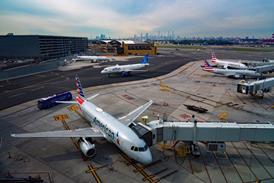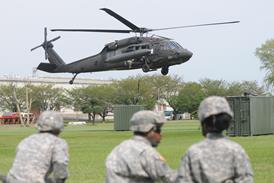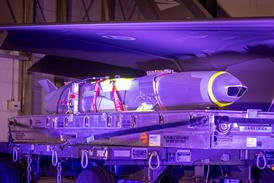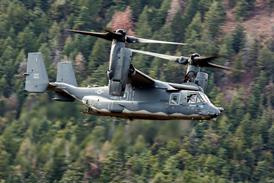VLADIMIR KARNOZOV / MOSCOW
Consortium calls on government to help twinjet compete with Western types
A Russian consortium that includes RSK MiG and Tupolev has been formed to boost the sales prospects for the 100-seat Tu-334 twinjet, as the first production aircraft rolls out in Kiev.
The National Project 334 group, which also includes Russian airlines, wants the government to provide tax breaks for the producers of the Tu-334 to enable it to compete with lease rates for older Airbus A319s and Boeing 737-500s.
Grigory Stilbans, Project 334 general director, says the goal is the elimination of sales and property tax for state-owned RSK MiG. "Of the Tu-334's current unit manufacturing costs of $18-20 million, a third is taken by taxes," he says. Russian airlines cannot afford to pay more than $14-15 million for 100-seat jets, he adds. Tax exemptions would enable Tu-334 monthly rentals to be cut from $334,000 to $150,000-200,000, which is comparable with five- to 10-year-old A319s or 737-500s.
So far, RSK MiG has invested over $50 million in Tu-334 certification and documentation and has set up a new workshop at its LAPIK facility near Moscow for Tu-334 assembly, but says it will not start mass production until economic conditions allow. RSK MiG says a production run of 100 aircraft is required to meet the target unit price.
Stilbans says a joint launch order for 40 aircraft is being finalised with a group of airlines. These aircraft could be assembled in 2004-8, with production continuing at a rate of two a month.
Launch customer Atlant Soyuz has orders for four Tu-334s. Aeroflot, KrasAir, Pulkovo and Sibir have also expressed interest in the type, and the total market in Russia and Ukraine is estimated at 150-215 aircraft over 15 years. RSK MiG has already secured $33 million in loans from Russian banks to support Tu-334 manufacturing, while state investment in the programme totals $23 million this year.
The Tu-334 prototype began flight tests in February 1999, and has completed about 200 flights. A second aircraft - the first production example - was rolled out at the Aviant plant in Kiev, Ukraine, on 2 August. This production aircraft is required for the completion of the Russian certification programme, set for year-end.
ADDITIONAL REPORTING BY PAUL DUFFY IN MOSCOW
Source: Flight International























